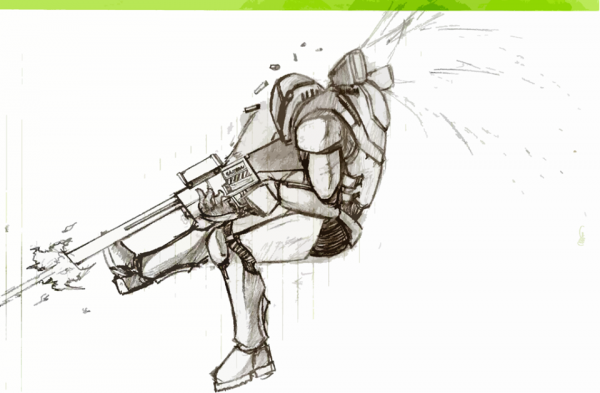Hey all,
I’m Joel Stottlemire, the Chief Editor of the Dryden Experiment. We are multi-media publishing company that uses a Creative Commons licensing structure. Scott asked me to write a post explaining what Creative Commons is and how we use it.
Creative Commons is a book unto itself. It came out of the software community. A lot of programming is repetitive and code gets modified and copied all the time. This creates a kind of weird place in terms of rights. Whoever wrote the code in the first place legally owns it but it doesn’t make sense for every coder in the world to have to re-write the command to operate a printer from scratch.
A group of developers started using a set of licenses that have grown into Creative Commons. There are a lot of different varieties of Commons Licensing but they all work on some variety of “you can use this software as long as you will credit me.” There are programs out there that are more or less built entirely out of other pieces of programs that were made available under Creative Commons.
This same licensing can be applied to anything else. Scientist sometimes use Creative Commons to share data. Musicians, photographers, anyone can tell the world, “Hey, it’s okay to use this, here are my conditions.” To get good insight on the different levels of Creative Commons and how they are used, you should stop by their website: creativecommons.org. They are very cool people.
At Dryden. We are using the Creative Commons Licensing to set Science Fiction publishing free. What we have done is built the skeleton of a Science Fiction Universe. We have a loose history of the Galaxy, rules for faster than light travel, aliens, etc. etc. We put the whole thing under the Creative Commons 3.0 BY-SA license which is the one that says, use it however you want, just credit me. Also 3.0 requires that anything created must be under Creative Commons also.
I’ll give you an example of what happens. I saw an artist on Deviant Art who had invented an alien species I like. I asked him if he’d add it to our universe. He said, sure. I wrote a novel using the alien. Another guy is building a video game about the species. The artist is now getting jobs to draw book covers, I’ve got a cool alien in my book, and the video game guy gets all of our support for his game without having to pay a marketing team.
As a kicker, no one is obligated to publish with us. In fact, a lot don’t. As long as Dryden is credited, you can publish wherever you would like. I do encourage everyone to let me know what they’ve got in market where so I can promote it, but you wouldn’t have to.
Each of us own our final product, but by agreeing to share the environments, stories, and characters under Creative Commons, we all get to work in a universe that’s much bigger and has better promotion than any of us could get on our own.
Thinking specifically about some of the niche scifi markets like Queer Scifi or Scifi Romance, which I’m also a member of, writing is the Dryden Universe is great way to bring things that would never get picked up by big publishers in front of a larger audience than just their niche.
As I mentioned before, the best place to learn about Creative Commons is on their website. If you want to learn more about Dryden, visit our Authors and Artists page:
The Dryden Author and Artists Group


